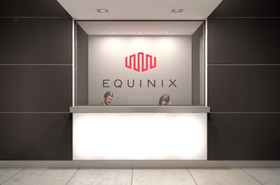Data has become the most important intellectual property to any business and its intrinsic value is only going to increase in the coming years.
It is now so crucial to operations, processes, output and supply, that the choices made on how it is stored, shared and processed will define the success and longevity of a company's operations.
In the coming months in this column, I will look closely at various aspects of the data dilemma, diving deeper into specific issues and themes.
But this introduction will set the scene on how data centers are changing - and why they need to - and will also make some predictions for the year ahead.
No longer is data simply housed on legacy on-site servers or even those from cloud-based third-parties. Hybrid/multicloud options are being leveraged more and more to take advantage of the boom in data demand.
When partners can analyze and share information securely and privately on a global scale, it brings many benefits. However, as companies wise up to this potential, many are now thinking more carefully and strategically about how and where their data is stored and the impact that has on them financially, on their security and on the environment.
These important conversations will drive what we at the heart of the industry come to define as a data center of the future, and for me these are the key areas we need to consider and focus on.
Growth
Anticipated global growth rates of the capacity to privately exchange data, via data centers, is forecast to be 51%, according to the Global Interconnection Index Volume 3. This means we cannot wait around to just build data centers that support immediate demands. We must anticipate an increasingly connected world and model what that means for the demand we will expect years from now. Those who take a short-term view of this future will come to regret it.
Sustainability
In 2020, I predict that operators will start to frame their sustainability investments in terms of positive externalities; rather than focusing on eliminating the negatives. Across the world, companies are taking their carbon footprints far more seriously and this extends to the power consumption of their data centers. This is a crucial area for operators to work on, continually innovating to reduce consumption, and using renewable energy to meet the demand for new, power-intensive technologies. In an independent global survey commissioned by Equinix of more than 2,450 IT decision-makers, 45 percent of respondents reported that their customers want them to demonstrate the sustainability of IT infrastructure. Four in 10 (39 percent) also said the carbon impact of IT infrastructure was central to their IT strategy.
Measurement
It is tough to plan for optimal efficiency without a detailed picture of how your data center is performing, in real time; backed with an analytics platform that enables you to take action based on what you observe. Power usage effectiveness (PUE) is an important industry metric, but in 2020 operators will begin to start thinking beyond PUE; innovating new solutions as the data centers and the communities they support become ever more connected
Machine learning will enable real-time adjustments to be made to our infrastructure without the need for human interaction at all, but can it replace people when it comes to interpreting the results?
Responsibility
All those working within the data center industry must take a collective responsibility for its future and work collaboratively to solve some of the pressing challenges through innovation. Designing the necessary solutions cannot be done alone; lessons must be shared for sustainable progress. Data center efficiency in the future will be all about optimizing the equipment within the building so that it can match digital demand to the highest degree possible.
Machine learning
One of the biggest challenges is how to capture all of the data that data centers actually create themselves. It is a complex process. Using artificial intelligence (AI) can allow us to quickly find patterns and optimise data centers enabling our experienced engineering team to rapidly implement new strategies to optimise our facilities. Tools are being developed that give customers have real-time online access to environmental and operating information relevant to the rack space they take up (IBX SmartView from Equinix monitors electrical and mechanical infrastructure to continually update insights on the most efficient and reliable operations). In 2020 I predict that more and more end users will use information like this to automate more of their interactions with their facility operator; creating new efficiencies for both.
Technology and infrastructure
Whether it is fuel cells, cooling or large-scale energy/battery storage, so much work is happening to develop the technology that will power a redefined future of the data center in our always-on society. Some predictions state data centers are positioned to use 4.5 percent of global energy by 2025 and growing energy costs mean even a slight improvement in efficiency can yield sizable cost savings and cut millions of tonnes of CO2 emissions.
I look forward to sharing some of the details of our exciting; future data center focused innovation agenda in this series.





